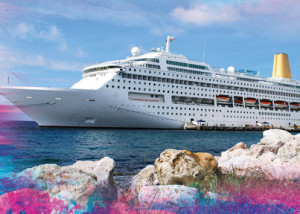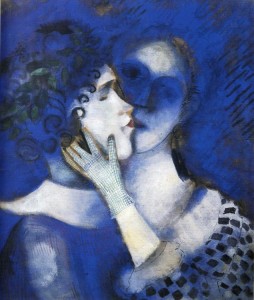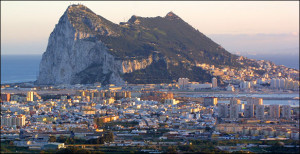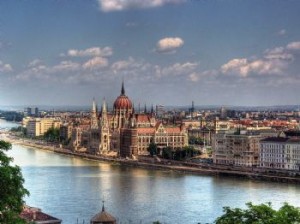 Jewish population in Hungary predates the invasion and conquest of the country by the Huns, or Magyar tribes by as many as 600 years. With some Jewish settlers arriving in 295 ad.
Jewish population in Hungary predates the invasion and conquest of the country by the Huns, or Magyar tribes by as many as 600 years. With some Jewish settlers arriving in 295 ad.
This fact is rather mindboggling, considering that the first few arrived as war prisoners, or slaves, when they were brought in as trophies by the warriors sent to squash Bar Kochba’s revolt. Thus began the history of the largest community of Jews in Europe, with their almost schizophrenic roller coaster existence. The persistence the Jewish community exhibited, despite the changing rulers, some of which were Anti-Semitic and encouraged blood libels, is astounding. There were others who embraced the Jews as a valuable contributors to the country’s culture and economy.
Some of the rulers, such as Bela IV, put the Jews under Royal protection, an act confirmed by all medieval kings in the new Magyar state.
Hungary has become a sort of a safe haven for Jews and they migrated there from more hostile countries.
There’s an interesting epitaph to Jews in early 300 a.d. was found in Siklos (by Yugoslavia) refers to Jewishness (“Judaea”). The tablet was inscribed on behalf of the chief of the Spondilla customhouse, referring to the [head of the synagogue of the Jews]” during the reign of Alexander Severus.
In 2008, a team of archeologists discovered a 3rd-century AD amulet in the form of a gold scroll with the words of the Jewish prayer Shema’ Yisrael inscribed on it in Féltorony (now Halbturn), Burgenland in Austria.
The name Zsido, from the Slavic, was the name given to Jews in Hungary.
The first historical document relating to Hungarian Jews is the letter written about 960 A.D. to King Joseph of the Khazars by Hasdai ibn Shaprut, the Jewish statesman of Córdoba, in which he says that the Slavic ambassadors promised to deliver the message to the King of Slavonia, who would hand the same to Jews living in “the country of Hungarin”, who, in turn, would transmit it farther. About the same time Ibrahim ibn Jacob says that Jews went from Hungary to Prague for business purposes. Dr. Samuel Kohn suggests that Jewish Khazars may have been among the Hungarian troops that under Árpád conquered the country in the second half of the 9th century. Nothing is known concerning the Jews during the period of the Vajdas, except that they lived in the country and engaged in commerce there.
In 1061, King Béla I ordered that markets should take place on Saturdays instead of the traditional Sundays (Hungarian language has preserved the previous custom, Sunday = vasárnap (meaning Market Day). In the reign of St. Ladislaus (1077–1095), the Synod of Szabolcs decreed (May 20, 1092) that Jews should not be permitted to have Christian wives or to keep Christian slaves. This decree had been promulgated in the Christian countries of Europe since the 5th century, and St. Ladislaus merely introduced it into Hungary.
At first they formed small communities and despite having no learned Rabbis, were strictly observant of all the Jewish laws and customs. One tradition relates the story of Jews from Ratisbon (Regensburg) coming into Hungary with merchandise from Russia, on a Friday; the wheel of their wagon broke near Buda and by the time they had repaired it and had entered the town, the Jews were just leaving the synagogue. The unintentional Sabbath-breakers were heavily fined, as per contemporary German customs.
When the During the reign of King Andrew II (1205–1235) there were Jewish Chamberlains and mint-, salt-, and tax-officials.
This was a short lived Golden age, disrupted by the nobles of the country, demanding the king to deprive the Jews of these high offices. When Andrew needed money in 1226, he farmed the royal revenues to Jews, which gave ground for much complaint. The pope (Pope Honorius III) thereupon excommunicated him, until, in 1233, he promised the papal ambassadors on oath that he would enforce the decrees of the Golden Bull directed against the Jews and the Saracens (by this time, the papacy had changed, and the Pope was now Pope Gregory IX; would cause both peoples to be distinguished from Christians by means of badges; and would forbid both Jews and Saracens to buy or to keep Christian slaves.
The year 1240 was the end of fifth millennium of the Jewish era. At that time the Jews were expecting the advent of their Messiah. The Mongol invasion in 1241 seemed to conform to expectation, as Jewish imagination expected the happy Messianic period to be ushered in by the war of Gog and Magog. Béla IV (1235&ndash1270) appointed a Jewish man named Henul to the office of court chamberlain &ndash the Jewish Teka had filled this office under Andrew II) and Wölfel and his sons Altmann and Nickel held the castle at Komárom with its domains in pawn. Béla also entrusted the Jews with the mint and Hebrew coins of this period are still found in Hungary. In 1251 a privilegium was granted by Béla to his Jewish subjects which was essentially the same as that granted by Duke Frederick II the Quarrelsome to the Austrian Jews in 1244, but which Béla modified to suit the conditions of Hungary. This privilegium remained in force down to the Battle of Mohács (1526).
At the Synod of Buda (1279), held in the reign of King Ladislaus IV (1272&ndash1290), it was decreed, in the presence of the papal ambassador, that every Jew appearing in public should wear on the left side of his upper garment a piece of red cloth
Any Christian transacting business with a Jew who was unmarked, or living in a house or on land together with any Jew, should be refused admittance to the Church services and that a Christian entrusting any office to a Jew should be excommunicated. Andrew III (1291&ndash1301), the last king of the Árpád dynasty, declared, in the privilegium granted by him to the community of Posonium (Bratislava), that the Jews in that city should enjoy all the liberties of citizens.
It’s easy to imagine the sew saw existance of the community, not knowing from one day to the next what their fate will be.
And yet, Jews in other countries fared such atrocities, that Hungary became a refuge.
During the extinstion of the Arpad rule, jews were persecuted and in fact were expelled,readmitted and expelled again during the Black Death and once again by King Louis.
Some years later, when Hungary was in financial distress, the Jews were recalled. They found that during their absence the king had introduced the custom of Tödtbriefe, i.e., cancelling by a stroke of his pen, on the request of a subject or a city, the notes and mortgage-deeds of the Jews. An important office created by Louis was that of “judge of all the Jews living in Hungary,” who was chosen from among the dignitaries of the country, the palatines, and treasurers, and had a deputy to aid him. It was his duty to collect the taxes of the Jews, to protect their privileges, and to listen to their complaints, which last-named had become more frequent since the reign of Sigismund Luxembourg (1387&ndash1437).
The successors of Sigismund: Albert (1437&ndash1439), Ladislaus Posthumus (1453&ndash1457), and Matthias Corvinus (1458&ndash1490) a protector of the jews&mdash-likewise confirmed the privilegium of Béla IV. Matthias created the office of Jewish prefect in Hungary. The period following the death of Matthias was a devastating one for the Hungarian Jews. It was said that his body was still warm when the masses attacked his Jewish proteges, confiscated their property, refused to pay debts owing to them, and persecuted them generally. The pretender John Corvinus, Matthias’ illegitimate son, expelled them from Tata, and King Ladislaus II (1490&ndash1516), always in need of money, laid heavy taxes upon them. During his reign, Jews were for the first time burned at the stake, many being executed at Nagyszombat (Trnava) in 1494, on suspicion of ritual murder.
The Hungarian Jews finally applied to the German Emperor Maximilian for protection. On the occasion of the marriage of Louis II and the archduchess Maria (1512), the emperor, with the consent of Ladislaus, took the prefect, Jacob Mendel of Buda, together with his family and all the other Hungarian Jews, under his protection, according to them all the rights enjoyed by his other subjects. Under Ladislaus’ successor, Louis II (1516&ndash1526), persecution of the Jews was a common occurrence. The bitter feeling against them was in part augmented by the fact that the baptized Emerich Szerencsés, the deputy treasurer, embezzled public funds.
in the 1500’s sheik Suliman vanquished Louis2 and decided to ditribute the Jews all over the ottoman empire. it seems that under Ottoman rule, the Jews fared much better and during this time worshipped at 3 different shuls, the Ashenazi, Sephardi and Syrian.
More turmoil followed but at the death of Maria teresa, whose son Joseph II became king, all opressions against jew were wiped out and they finally became free to settle thruout the country. It was required though that all jews learn Hungarian and that all their documents be composed in eithr Latin or Hungarian, rather than Hebrew or Yiddish.Jewish schools were requested to teach the same material as the rest of the hungarians.In 1978, it was decreed that all Jews should choose a german surname and perform millitary service.
The next step was a decision to translate the Pentatuch to Hungarian, all Jews to speakthe country’s language. and some liberal rabbis began preaching in Hungarian.1848-49 Jews have become patriotic fighters and soon were announced as equal citizens, including the permission to intermarry.
The liberation was short lived, and after 2 weeks the Russian and Austrian troops punished the jews w heavy taxes but still, the population grew and in 1910 consisted of almost 5% of Hurgary’s total populace. 972.000 jews lived in Hungary, working as bakers and merchants, tailors yet the Neologs tended to embrace the intellectual pursuits, and 48.5% percent of all of physicians were Jews.
The Great Synangogue was built in Dohany utca, and it had the odd combination of Kipa wearing Jews having organ play during Shabbath services.
The Holocaust wiped out the majority of Hungarian Jews, all the ones living in the smaller regions were exterminated, and the largest community in budapest was largely spared till the end, when the Nyilash movement (according to many, worse than the Nazi’s themselves,) exterminated, sent to labor camps and decimated the the Budapest community to a shadow of it’s former size.
Budapest, one of the most beautifu cities in Europe, is still home to a large Jewish community. It has the renovated Dohany Temple (the largest in Europe) kindergartens, youth groups and a plethera of Jewish Kosher restaurants.
The Temples are heavily attended and in a recent visit I witnessed hundreds of people, many of them young couples with kids attend Friday services.
The community is flourishing again, and despite outbreaks of anti semitism by the Jobbik party, they fight back with the help of the local Bishop, an opera constructed to raise attention to the ugliness raising it’s head, and the news of the former Jobbik leader, who began observing the Sabbath because he found out of his own Jewish heritage.
– See more at: http://www.kosherica.com

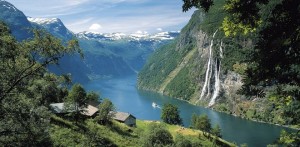
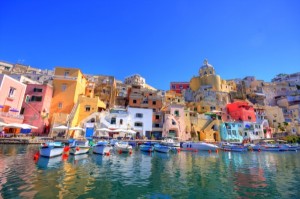
 On my recent cruise to the The Greek Isles, the itinerary included a 5 hour stop in Dubrovnik, Croatia. I knew about this breath taking, UNESCO World Heritage site, from reading travel publications and interestingly, word of mouth. Dorina, my Croatian hair stylist, an avid traveler and fellow jew, said it was the most beautiful town in Europe period! She was overjoyed when I mentioned we’ll be stopping there and gave me some tips for the ‘must see’ sites, knowing my passion for all things Jewish, especially the little known and ancient.
On my recent cruise to the The Greek Isles, the itinerary included a 5 hour stop in Dubrovnik, Croatia. I knew about this breath taking, UNESCO World Heritage site, from reading travel publications and interestingly, word of mouth. Dorina, my Croatian hair stylist, an avid traveler and fellow jew, said it was the most beautiful town in Europe period! She was overjoyed when I mentioned we’ll be stopping there and gave me some tips for the ‘must see’ sites, knowing my passion for all things Jewish, especially the little known and ancient. 
 My latest visit to the magnificent city of St. Petersburg, I realized that some travelers don’t have enough time to take in every treasure this extraordinary city has to offer,
My latest visit to the magnificent city of St. Petersburg, I realized that some travelers don’t have enough time to take in every treasure this extraordinary city has to offer,